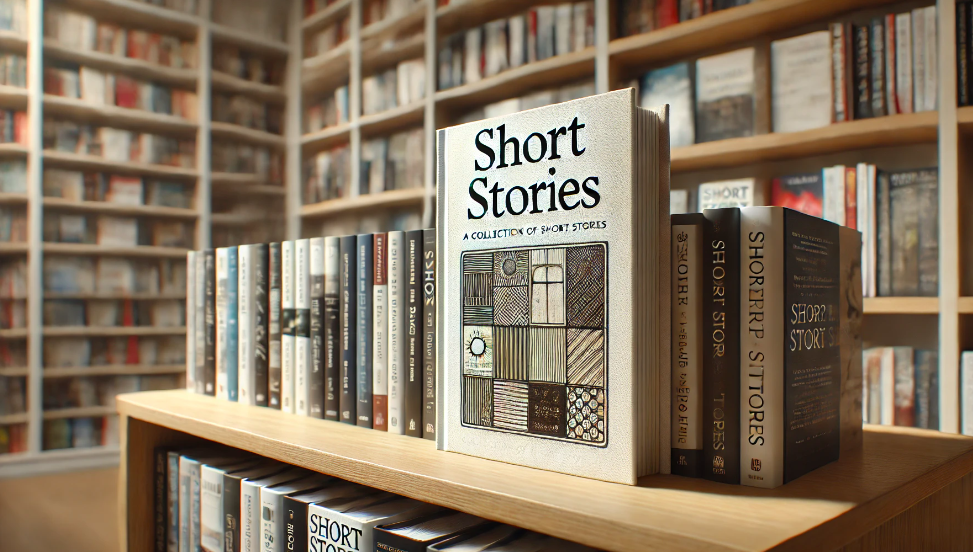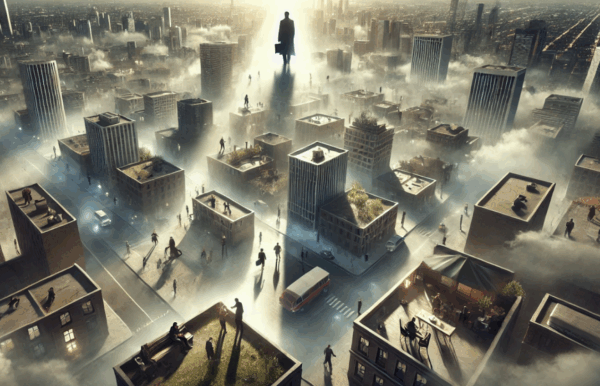Short stories hold a unique and significant place in the literary world. They allow writers to explore complex themes and emotions within a compact framework, providing a powerful punch of storytelling in just a few pages. Unlike novels, short stories demand brevity and precision, making every word count and every sentence purposeful. This tight structure challenges writers to hone their craft, improving their ability to create vivid characters, compelling plots, and engaging dialogues swiftly. Crafting a compelling story with a strong beginning, middle, and end is essential to captivate readers and convey a poignant incident that represents a bigger picture.
Writing short stories is a valuable skill for writers of all levels. It fosters creativity, enhances narrative techniques, and builds a solid foundation for longer works. For aspiring writers, it serves as a gateway to mastering the art of storytelling. For seasoned authors, it offers a refreshing change of pace and a way to experiment with new ideas. Ultimately, the discipline of crafting short stories hones a writer’s skills, making them more versatile and adept in their writing journey.
Understanding What Makes a Short Story
A short story is a brief work of fiction that typically ranges from 1,000 to 7,500 words. It focuses on a single incident or a series of linked incidents, aiming to evoke a single effect or mood. Unlike longer forms of fiction, a short story’s compact length necessitates a clear and concise narrative, often with a defined beginning, middle, and end, although some may experiment with structure. The primary goal is to engage readers quickly and leave a lasting impression with its concise and poignant storytelling, creating a coherent and well-resolved complete story within the constraints of the short story format.
Key Differences Between Short Stories and Novels
Short stories and novels are distinct in several key ways. Firstly, the length is the most obvious difference. Novels usually exceed 40,000 words, allowing for more complex plots, multiple characters, and detailed settings. In contrast, short stories are much shorter, requiring a more focused narrative and limited character development.
Your Publishing Journey Awaits – Start NowSecondly, the pacing and depth of content differ. Novels provide space for subplots, extensive background information, and gradual character development. Short stories, however, must establish context, introduce characters, and develop the plot swiftly. Every element in a short story is crucial to the narrative’s overall impact.
Lastly, the thematic exploration in short stories is often more concentrated. While novels can explore multiple themes and perspectives, short stories typically hone in on a single theme or emotional experience, creating a more intense and immediate connection with the reader.
Brief History and Notable Short Story Writers
The short story as a literary form has evolved over centuries, with roots tracing back to oral storytelling traditions. However, it gained significant prominence in the 19th century, particularly with the advent of periodicals and magazines that provided a platform for short fiction. Literary short stories often explore uncertainty and ambiguity, blending realism with potential nonrealistic elements such as surrealism, absurdism, and magical realism.
Guy de Maupassant, a French writer known for his masterful short stories, contributed significantly to the form with works like “The Necklace” and “Boule de Suif.” His stories often depicted human nature and society with irony and realism.
Edgar Allan Poe, an American writer, is another notable figure. He is credited with pioneering the modern short story and the detective fiction genre. His tales, such as “The Tell-Tale Heart” and “The Fall of the House of Usher,” are renowned for their psychological depth and gothic atmosphere.
Other influential short story writers include Anton Chekhov, who focused on everyday life and the human condition, and O. Henry, known for his witty narratives and twist endings. These writers have left an indelible mark on the short story form, showcasing its versatility and enduring appeal.

Writing Compelling Short Stories: Planning Your Stories
The first step in writing a compelling short story is generating unique and engaging story ideas. Inspiration can come from various sources: personal experiences, news articles, dreams, or even casual observations. Writers can also use prompts or exercises to spark creativity. Asking “what if” questions can lead to intriguing scenarios. For instance, what if a person wakes up with the ability to read minds? Additionally, drawing from emotional experiences or exploring universal themes such as love, loss, and conflict can provide a solid foundation for a story. Brainstorming sessions and mind mapping are effective techniques to develop and refine these initial ideas.
Choosing a Compelling Main Character
A well-developed main character is crucial for a short story. Disrupting the main character’s life early in the story is essential to capture the reader’s interest. This character should be relatable, interesting, and have a clear motivation or goal. Start by defining the character’s background, personality traits, and desires. What drives them? What are their fears and weaknesses? Characters should be complex and multi-dimensional to engage readers. It’s also important to consider the character’s arc. How will they change by the end of the story? A compelling main character often faces a significant challenge or conflict, providing a pathway for growth or revelation.
Deciding on the POV Character
The point of view (POV) from which the story is told can greatly influence its impact. Common POV choices include first-person, where the story is narrated by the main character using “I”; third-person limited, where the narrator provides insight into one character’s thoughts and feelings; and third-person omniscient, where the narrator knows all characters’ thoughts and experiences.
The chosen POV should align with the story’s tone and theme. For a more intimate and personal feel, first-person POV might be best. However, if the story requires a broader perspective or multiple viewpoints, the third person might be more effective. The POV character should be the one with the most at stake, providing the reader with a direct line to the story’s emotional core.
Developing the Story Structure and Plot
A well-structured plot is essential for a short story. Given the limited word count, every element of the plot must be tightly woven and purposeful. Start with a clear outline, identifying the beginning, middle, and end. The story should begin with an inciting incident that sets the main character on their journey. This is followed by rising action, where the character faces obstacles and challenges. The climax is the peak of the story, where the main conflict reaches its highest point. Finally, the falling action and resolution tie up loose ends and provide closure.
In developing the plot, consider using classic structures like Freytag’s Pyramid, which includes exposition, rising action, climax, falling action, and denouement. Alternatively, the three-act structure—comprising setup, confrontation, and resolution—can also be effective. Whichever structure is chosen, ensure the plot is driven by the character’s actions and decisions, maintaining a strong cause-and-effect relationship throughout the story.
Incorporate subplots and supporting characters judiciously. They should enhance the main narrative without overwhelming it. Each scene should serve a purpose, whether it’s developing the character, advancing the plot, or establishing the setting. Keep the pacing brisk and avoid unnecessary diversions. The goal is to create a tight, cohesive narrative that keeps readers engaged from start to finish.
By carefully planning your short story, from generating ideas to developing characters and structuring the plot, you lay a solid foundation for compelling and memorable storytelling.
Crafting the Opening
To write a short story, the first sentence is crucial as it sets the tone, establishes the setting, and captures the reader’s attention. In a short story, where every word counts, the opening line must be compelling and intriguing enough to draw the reader into the narrative immediately. It serves as the hook that piques curiosity and encourages the reader to continue. An effective first sentence can create a strong impression, establish the mood, and introduce a key element of the story.
Techniques for Writing an Engaging Opening
1. Start with Action: Plunging the reader into the middle of an action scene can create immediate interest. For example, opening with a character in a moment of crisis or conflict can be very engaging.
2. Create Mystery or Suspense: Pose a question or describe an unusual situation that makes the reader want to find out more. This technique leverages the power of curiosity.
3. Use Vivid Imagery: Describing a scene or character in vivid detail can immerse the reader in the story’s world. Using sensory details can make the opening more vivid and engaging.
4. Introduce a Unique Voice: Starting with a distinctive narrative voice or an intriguing character’s perspective can capture the reader’s interest. A strong, unique voice can make the reader eager to hear more from the narrator.
5. Set the Mood: Establishing the story’s tone or atmosphere right from the start can be very effective. Whether it’s eerie, joyous, tense, or melancholic, the mood should be palpable in the opening line.
Examples of Great Opening Sentences
- “It was a bright cold day in April, and the clocks were striking thirteen.” – George Orwell, 1984. This line sets an immediate tone of surrealism and foreboding.
- “I’m pretty much fucked.” – Andy Weir, The Martian. This blunt and shocking statement instantly grabs attention and makes the reader curious about the predicament.
- “The small boys came early to the hanging.” – Ken Follett, The Pillars of the Earth. This opening line creates a vivid scene and a sense of dread, prompting questions about the story’s context.
- “The sky above the port was the color of television, tuned to a dead channel.” – William Gibson, Neuromancer. The metaphorical description paints a vivid picture and sets a futuristic, bleak mood.
Crafting an engaging opening requires balancing these techniques to suit the story you want to tell. The goal is to pull the reader into your world and make them want to stay there until the last word.
Developing Characters
Creating compelling characters is essential for a successful short story. Start with the main character, who should be well-rounded and multi-dimensional. Consider their background, personality, motivations, and conflicts. What drives them? What are their strengths and weaknesses? A deep understanding of your main characters will help you portray them convincingly and make them relatable to readers. Developing your own writing style and gaining confidence through personal writing experiences can significantly enhance your ability to create unique and engaging characters.
Your Publishing Journey Awaits – Start NowSupporting characters should also be thoughtfully crafted, though they may not require as much detail as the main character. Each supporting character should have a clear purpose in the story, whether it’s to challenge, support, or reveal aspects of the main character. Ensure that supporting characters have distinct traits and roles that contribute to the narrative. Avoid cluttering the story with too many minor characters; focus on a few key ones who can effectively advance the plot and enrich the main character’s journey.
Character Arcs and Development
Character development is crucial in a short story, where space is limited but the impact must be significant. A well-crafted character arc shows how the main character changes or grows due to the events of the story. This transformation can be internal, such as a shift in beliefs or attitudes, or external, like overcoming a challenge or achieving a goal.
To develop a strong character arc, identify the starting point and endpoint for your character. What is their initial situation or mindset? What event or conflict propels them into action? How do they respond and adapt? By the story’s conclusion, how have they changed, and what have they learned? A clear and compelling arc makes the character’s journey meaningful and satisfying for readers.
Supporting characters can also have mini-arcs or significant moments that highlight their development or influence the main character’s journey. These arcs should complement the main narrative without overshadowing it.
Combining Characters to Streamline the Story
In a short story, the economy of characters is vital. Too many characters can dilute the narrative and overwhelm the reader. Combining characters is an effective way to streamline the story and keep it focused. Look for opportunities to merge characters who serve similar functions or who can be combined without losing their essential contributions to the plot.
For example, if two characters provide similar types of support or conflict for the main character, consider blending their roles into a single, more complex character. This can add depth and reduce confusion, ensuring that each character’s presence is meaningful and impactful.
When combining characters, ensure that the resulting character remains believable and retains the necessary traits and motivations. The goal is to simplify the story while preserving its richness and depth.
By carefully developing your main and supporting characters, crafting clear character arcs, and streamlining your cast, you can create a dynamic and engaging narrative that resonates with readers. Well-defined characters bring the story to life, making it memorable and impactful.

Building the Plot
The inciting incident is the catalyst that sets the story in motion. It disrupts the status quo and propels the main character into the central conflict. This event should occur early in the story, ideally within the first few paragraphs, to quickly engage the reader. The inciting incident can take various forms—an unexpected event, a decision, or a revelation that challenges the protagonist’s current situation.
For example, in a mystery story, the inciting incident might be the discovery of a crime. In a romance, it could be the protagonist meeting a potential love interest. Whatever the form, it must be significant enough to compel the main character to act, thus driving the plot forward. Additionally, understanding short story writing involves practical tips and a historical overview, including the evolution of short stories and advice on character development.
Maintaining Internal Logic
Internal logic is crucial for creating a believable and cohesive narrative. Every event and character action should make sense within the established world of the story. Consistency in character behavior, setting, and plot details is essential. Readers must believe that the character’s actions and the story’s developments are plausible.
To maintain internal logic, ensure that character motivations and actions align with their established traits and backgrounds. Avoid introducing plot twists or resolutions that feel forced or unearned. Foreshadowing can help establish internal logic by subtly hinting at future events, making the story’s progression feel natural and inevitable.
When revising your story, check for any inconsistencies or plot holes. Each scene should logically lead to the next, creating a smooth and coherent narrative flow.
Pacing and Structure for Short Stories
Pacing refers to the speed at which the story unfolds. In short stories, pacing must be brisk due to the limited word count. However, it’s important to balance fast-paced action with moments of reflection and character development. Effective pacing keeps the reader engaged without feeling rushed.
The structure of a short story typically follows a condensed version of the traditional narrative arc: exposition, rising action, climax, falling action, and resolution. Here’s a brief breakdown:
- Exposition: Introduce the main character, setting, and situation. Establish the stakes and foreshadow the inciting incident.
- Rising Action: Develop the conflict and build tension. The protagonist faces challenges and obstacles, gradually escalating the stakes.
- Climax: The story’s turning point where the main conflict reaches its peak. The protagonist must confront the central issue or antagonist.
- Falling Action: The aftermath of the climax. The story begins to resolve, addressing the consequences of the protagonist’s actions.
- Resolution: Conclude the story with a satisfying ending. The protagonist’s journey is complete, and the central conflict is resolved.
Each section should be concise yet impactful, ensuring that every scene advances the plot or deepens character development. Avoid unnecessary diversions or subplots that do not contribute directly to the main narrative.
By establishing a strong inciting incident, maintaining internal logic, and carefully managing pacing and structure, you can build a compelling and cohesive plot that captivates readers. The goal is to create a seamless and engaging story that feels both concise and complete.
Writing Stage
Drafting the first draft is the initial step where your ideas transform into a tangible story. Begin by writing freely without worrying about perfection. The goal is to get the story down on paper, allowing creativity to flow without self-censorship. Set aside specific times for writing to establish a routine and build momentum.
During this stage, focus on capturing the essence of your story. Don’t worry about grammar, punctuation, or stylistic nuances; those can be refined later. Concentrate on developing your plot, characters, and key scenes. If you encounter writer’s block, move past the problematic section and return to it later. Remember, the first draft is about progress, not perfection. When you write short stories, emphasize self-editing and tightening the narrative to captivate readers.
Using Writing Prompts for Inspiration
Writing prompts are valuable tools for overcoming writer’s block and sparking creativity. They provide a starting point, helping you generate ideas and explore new themes or scenarios. Here are a few examples of prompts to kickstart your writing:
1. “Write a story where a character discovers a hidden room in their house.”
2. “Describe a day in the life of a character who can read minds.”
3. “Write about an unexpected encounter between two estranged friends at a remote café.”
Using prompts can lead you to explore unexpected directions and develop unique plot lines. They can also help you break free from routine thinking patterns, opening up new possibilities for your story.
Balancing Show vs. Tell
One of the most crucial skills in fiction writing is balancing “show” vs. “tell.” Showing involves describing actions, thoughts, and feelings in a way that allows readers to experience them firsthand. Telling, on the other hand, involves summarizing information or providing direct exposition.
Show:
– “Her hands trembled as she reached for the old, dusty letter, tears welling up in her eyes.”
Tell:
– “She was nervous and sad when she found the letter.”
While both techniques are necessary, showing is often more engaging because it allows readers to draw their conclusions and feel more connected to the characters. However, telling can be useful for conveying information quickly or moving the story along. The key is to find a balance that suits your story’s pacing and tone.
Incorporating the Five Senses
Incorporating sensory details can make your story more immersive and vivid. Descriptions that engage the five senses—sight, sound, smell, taste, and touch—help create a rich and textured narrative.
- Sight: Describe colors, shapes, and visual details. “The golden sunlight filtered through the leaves, casting dappled shadows on the ground.”
- Sound: Include sounds to add atmosphere. “The distant howl of a wolf echoed through the night, sending shivers down her spine.”
- Smell: Scents can evoke strong memories and emotions. “The scent of fresh pine and damp earth filled the air, reminding him of childhood summers.”
- Taste: Use taste to enrich the scene. “She savored the tartness of the lemonade, its citrus bite refreshing on the hot day.”
- Touch: Describe textures and physical sensations. “The rough bark of the tree scraped against her palms as she climbed higher.”
Integrating these sensory details can make your story more engaging and help readers feel like they are part of the narrative. It adds layers of depth to your descriptions and enhances the overall reading experience.
By focusing on drafting the first draft, using writing prompts for inspiration, balancing show vs. tell, and incorporating the five senses, you can create a vivid and compelling short story. This stage is about bringing your ideas to life and crafting a narrative that captivates and resonates with your readers.
Revising and Editing
Revising is an essential part of the writing process, where you refine your story and enhance its overall quality. Begin by taking a break after completing your first draft. This break allows you to return to your story with a fresh perspective. When you’re ready to revise, follow these steps:
1. Read Through the Entire Story: Read your story from beginning to end without making any changes. Take notes on your initial impressions and identify areas that need improvement.
2. Assess the Structure: Evaluate the overall structure of your story. Ensure that the inciting incident, climax, and resolution are well-placed and that the narrative flows logically.
3. Focus on Characters: Examine your characters’ development. Are their motivations clear? Do they experience growth or change? Ensure that each character serves a purpose in the story.
4. Refine the Plot: Look for any plot holes or inconsistencies. Ensure that the story maintains internal logic and that all loose ends are tied up by the conclusion.
5. Enhance Descriptions: Improve your sensory details and descriptions to create a more immersive experience for the reader.
Tips for Editing and Refining
Editing involves polishing your prose to enhance readability and coherence. Here are some tips:
1. Cut Unnecessary Words: Eliminate redundant words and phrases. Aim for concise and clear sentences.
2. Vary Sentence Structure: Use a mix of short and long sentences to create a dynamic rhythm.
3. Check Grammar and Punctuation: Correct any grammatical errors, typos, and punctuation mistakes.
4. Read Aloud: Reading your story aloud can help you catch awkward phrasing and improve the flow of your prose.
5. Pay Attention to Dialogue: Ensure that your dialogue sounds natural and that each character has a distinct voice.
Seeking Feedback from Other Writers
Feedback from fellow writers is invaluable for improving your story. Join a writing group or workshop where you can share your work and receive constructive criticism. Be open to feedback and consider different perspectives. Constructive criticism can help you identify blind spots and areas for improvement that you might have missed.
Importance of Fresh Eyes for the Final Draft
After revising and editing your story, it’s crucial to get a fresh set of eyes on your work. Someone who hasn’t read your story before can provide an unbiased perspective and spot issues you might overlook. This could be a fellow writer, a friend, or a professional editor.
Your Publishing Journey Awaits – Start NowOnce you’ve received feedback and made final adjustments, read through your story one last time. Ensure that it flows smoothly, all elements are cohesive, and the narrative is engaging from start to finish.
By following these steps and tips, you can refine your short story into a polished and compelling piece of fiction that resonates with readers.
Special Forms of Short Fiction
Flash fiction and microfiction are unique forms of short storytelling characterized by their extreme brevity. Flash fiction typically ranges from 300 to 1,000 words, while microfiction, sometimes known as “micro stories” or “short shorts,” is even shorter, often under 300 words. Despite their concise length, these forms of fiction demand the same narrative elements as longer stories—character, plot, conflict, and resolution—compressed into a tiny space.
Writing Short Stories with So Few Words
Writing flash and microfiction requires precision and economy of language. Every word must serve a purpose, contributing to the overall story. Here are some tips for crafting effective short fiction:
1. Focus on a Single Moment or Incident: Choose a pivotal moment or a single incident that encapsulates the essence of your story. There’s no room for extensive backstory or subplots.
2. Use Suggestion and Implication: Imply more than you state outright. Let readers fill in the gaps with their imagination. This creates a sense of depth without using many words.
3. Strong Opening and Closing Lines: Begin with a compelling opening that grabs attention immediately. Conclude with a punchy ending that leaves a lasting impact.
4. Edit Ruthlessly: Eliminate any unnecessary words or details. Every sentence should move the story forward or reveal something crucial about the characters or plot.
Examples of Effective Flash Fiction
- “For Sale: Baby Shoes, Never Worn.” – Often attributed to Ernest Hemingway, this six-word story is a masterclass in brevity, evoking a deep emotional response with minimal words.
- “Sticks” by George Saunders: This very short story portrays a complex family relationship and the passage of time through the metaphor of a father’s holiday decorations.
- “The Dinosaur” by Augusto Monterroso: At just seven words, “When he awoke, the dinosaur was still there,” this story suggests a vast and intriguing context, leaving much to the reader’s imagination.
These examples demonstrate how powerful and evocative stories can be told with very few words, making flash fiction and microfiction challenging yet rewarding forms for writers to explore.

Publishing and Sharing Your Story
Once you’ve crafted your short story, the next step is finding the right platform to share it with readers. Begin by researching literary magazines, anthologies, and online platforms that publish short fiction. Consider the style, genre, and themes of your story to match it with suitable publications. Some venues focus on specific genres like science fiction, horror, or romance, while others welcome a broad range of literary fiction.
Submitting to Literary Magazines and Contests
Literary magazines and writing contests are excellent avenues for getting your work noticed. Many prestigious magazines such as The New Yorker, Tin House, and Glimmer Train accept short story submissions and can provide significant exposure. Here are some steps to guide your submission process:
1. Follow Submission Guidelines: Each magazine or contest will have specific submission guidelines regarding word count, format, and deadlines. Adhering to these guidelines is crucial for your story to be considered.
2. Craft a Strong Cover Letter: Introduce yourself and your story succinctly in a cover letter. Mention any relevant writing credentials or previous publications.
3. Submit to Multiple Venues: Increase your chances of publication by submitting to multiple magazines and contests simultaneously. However, be mindful of any rules regarding simultaneous submissions.
4. Be Prepared for Rejections: Rejections are a natural part of the process. Use them as learning experiences and keep submitting your work.
Self-Publishing Options
Self-publishing has become a viable option for many writers, offering creative control and direct access to readers. Platforms like Amazon Kindle Direct Publishing (KDP), Spines, Smashwords, and IngramSpark allow you to publish your short stories as e-books or print-on-demand books. Here are some tips for successful self-publishing:
1. Invest in Professional Editing: Ensure your story is polished and error-free by hiring a professional editor.
2. Design an Attractive Cover: A compelling cover design can make a significant difference in attracting readers.
3. Promote Your Work: Use social media, author websites, and blogs to market your story. Engage with your audience and build a reader base.
4. Consider Collections: If you have multiple short stories, consider publishing them as a collection. This can provide more value to readers and increase your marketability.
By finding the right publication venues, submitting to literary magazines and contests, and exploring self-publishing options, you can share your short stories with a broader audience. Each path has its own advantages and can help you build your reputation as a writer.
Happy Writing!
Crafting compelling short stories involves generating unique ideas, developing strong characters, and structuring a concise, engaging plot. Begin with an intriguing opening, maintain internal logic, and balance showing and telling. Utilize writing prompts for inspiration, and incorporate sensory details to enhance your narrative. Revise and edit meticulously, seek feedback, and consider various publishing options.
Now, it’s time to start writing. Embrace the process, be persistent, and let your creativity flow. Remember, every great story begins with a single word. Keep honing your craft, and soon you’ll be sharing your unique voice with the world. Happy writing!
Have you completed your manuscript and are ready to share it with the world? Spines stands as your gateway to the publishing realm, embodying the future of publishing. Our AI-powered platform is designed to revolutionize your publishing journey, offering a suite of comprehensive services. These include detailed editing and proofreading, captivating cover creation, seamless distribution, and strategic marketing across various channels and platforms. With Spines, your book is not only set to transcend the ordinary but also to make a significant impact in the new era of publishing. Sign up for free to start your self-publishing journey.







